
Bangka Belitung Islands Province
A Comprehensive Look at Bangka Belitung Islands Province
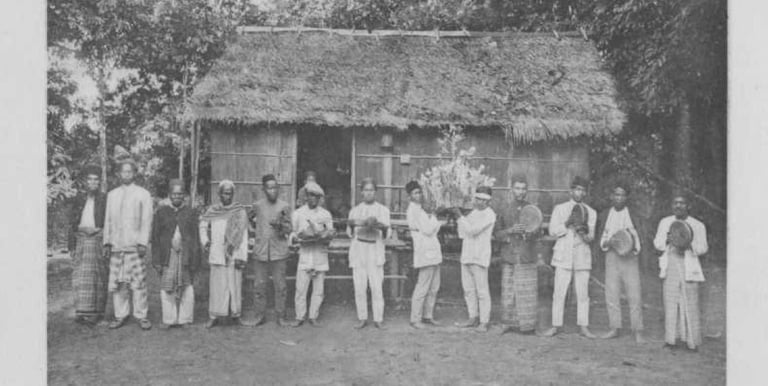

🏛️ Capital City and Geographical Conditions
Capital City: Pangkal Pinang (located on Bangka Island).
Geographical Conditions: The province consists of low-lying islands with a gentle terrain.
Geology: The islands are part of the Sunda Shelf and are rich in mineral deposits, particularly tin (cassiterite) and kaolin clay. The landscape is characterized by former mining pits (kolong) and distinct, large, weathered granite rock formations found along the beaches, especially in Belitung.
Coastline: Known for its stunning coastline featuring white sandy beaches and clear, shallow waters, particularly on Belitung Island.
Climate: Tropical climate with two main seasons, wet and dry, and high humidity.
📜History: Tin Mining and Maritime Trade
Bangka Belitung's history is largely dictated by its abundant mineral resources and its position on maritime trade routes.
Early Settlement: The islands were historically part of the Srivijaya Empire's sphere of influence. The indigenous people are the Sekak (Sea Gypsies).
The Tin Rush: The discovery of vast tin deposits in the 17th and 18th centuries transformed the islands. The Dutch and the British constantly vied for control. The colonial powers brought in significant numbers of Chinese laborers to work the mines, leading to a large, established Chinese Indonesian community, particularly in Bangka.
Provincial Status: The islands were historically part of South Sumatra Province until 2000, when they were formally established as a separate province, recognizing their distinct economic and social identity.
👥Demographics and Customs
Population: The population of Bangka Belitung is approximately 1.5 million people.
Ethnic Groups: The population is highly diverse, reflecting historical migration patterns:
Melayu (Malay): The indigenous majority, primarily found in coastal and interior villages.
Chinese Indonesian (Hakka): A very large and economically influential community, concentrated in urban areas and historically tied to the tin mining industry.
Orang Laut (Sea People/Sekak): The traditional nomadic inhabitants of the sea.
Batak, Javanese, Bugis: Significant immigrant communities attracted by employment opportunities.
Customs (Adat): The local culture is a fusion of Malay and Chinese influences, particularly visible in culinary traditions and festivals. Harmony between the two major ethnic groups is a defining characteristic.
🎨Culture and Traditional Arts
The culture of Bangka Belitung is rooted in maritime and communal traditions.
Festival Perang Ketupat: A unique traditional ritual practiced by the Bangka Malay community, involving throwing woven rice cakes (ketupat) at the end of the Islamic holy month of Muharram, meant as a ceremony of rejection of bad luck.
Music and Dance: Dominated by Malay-style music and dance, often featuring instruments like the Gambus (lute) and Rebana (frame drum).
Architecture: Traditional Malay houses built on stilts and unique temples that blend Malay and Chinese architectural styles.
🍲Distinctive Traditional Cuisine
Bangka Belitung cuisine is known for its strong flavors derived from fresh seafood and the use of locally produced shrimp paste (belacan).
Lempah Kuning (Yellow Curry): The signature dish. It is a sour and spicy broth made without coconut milk, using turmeric (giving it the yellow color), chilies, and sour agents like tamarind or pineapple. It is typically cooked with various types of fresh fish or seafood.
Pempek Bangka/Belitung: Similar to Palembang's Pempek but often featuring a higher fish content and served with a distinctive chili-based cuko (sauce) that may be less sweet and more sour/spicy than the Palembang version.
Lakso: A thick, savory noodle made from sago flour, served in a rich, creamy yellow fish or shrimp curry sauce made with coconut milk.
Rusip: A traditional relish or condiment made from fermented anchovies or small fish mixed with grated coconut and chili. It has a powerful, unique umami flavor and is a staple accompaniment to meals.
🗺️Famous Tourist Attractions
The province is celebrated for its stunning geological and cinematic landscapes.
Tanjung Kelayang and Tanjung Tinggi (Belitung): The most famous beaches, recognizable by the massive, smooth granite boulders scattered across the white sand and clear turquoise water. Tanjung Tinggi was the primary filming location for the internationally acclaimed Indonesian film Laskar Pelangi (The Rainbow Troops).
Lengkuas Island (Pulau Lengkuas): A small island off Belitung, famous for its historic 19th-century lighthouse, which visitors can climb for spectacular panoramic views of the surrounding islands and granite seascape.
Kaolin Lake (Danau Kaolin): A visually striking former mining site where the white kaolin clay contrasts sharply with the incredibly bright blue water.
Bangka Botanical Garden (BBG): A successful example of land reclamation from former mining areas, now an integrated farm and ecotourism site near Pangkal Pinang.
✈️Transportation Infrastructure
The islands rely heavily on air and sea transport for connectivity.
Airports (Bandar Udara):
Depati Amir Airport (PGK): Located in Pangkal Pinang (Bangka), serving domestic flights to Jakarta, Palembang, and others.
H.A.S. Hanandjoeddin International Airport (TJQ): Located in Tanjung Pandan (Belitung), primarily serving domestic routes but occasionally handling regional international flights, especially to Singapore and Kuala Lumpur.
Ports (Pelabuhan):
Port of Pangkal Balam (Bangka) and Port of Tanjung Pandan (Belitung): These are the main seaports handling commercial goods, passenger ferries (connecting the islands to Sumatra and Java), and inter-island transport.
Railroad (Stasiun Kereta Api):
The Bangka Belitung Islands Province does not have any active railway network or passenger train stations. All land transport is conducted via road networks.
Bangka Belitung Islands offer a fascinating convergence of economic history and breathtaking natural recovery. Defined by the scars of the global tin trade and the resilience of its diverse, harmonious communities, the province has transformed its industrial past into a future as a premier ecological and cultural tourism destination. With its iconic granite beaches and flavorful coastal cuisine, Babel stands as a unique gem, inviting visitors to uncover the stories hidden beneath its turquoise waves and towering boulders.
🏝️Bangka Belitung Islands : The Tin Islands and Turquoise Seas
The Bangka Belitung Islands Province, often abbreviated as Babel, is a relatively young province in Indonesia, comprising two main islands, Bangka and Belitung, and numerous smaller islands. Located just east of Sumatra, the province is known for its distinct granite rock formations, pristine turquoise beaches, and a history deeply intertwined with the global tin mining industry.
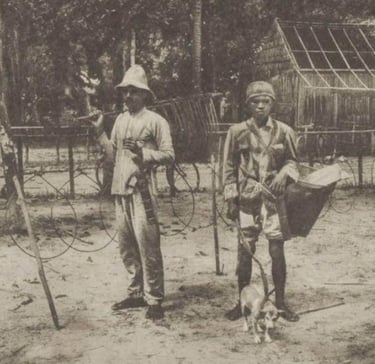



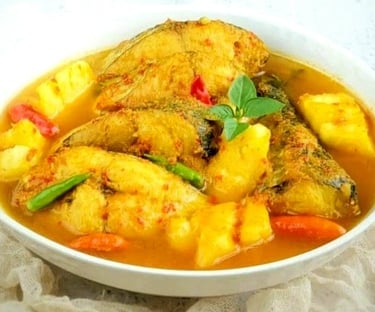

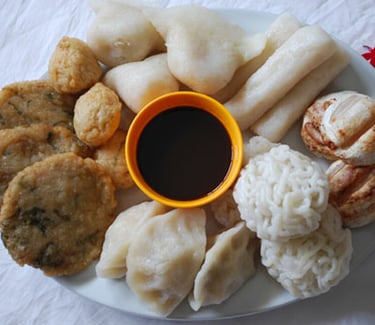



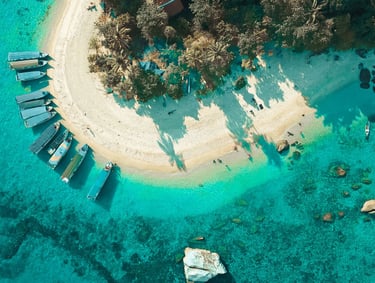


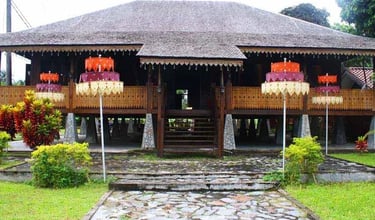
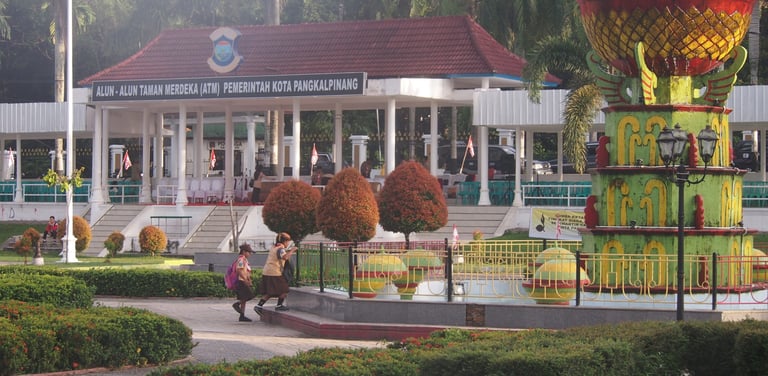

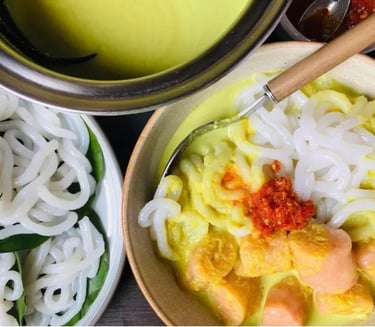

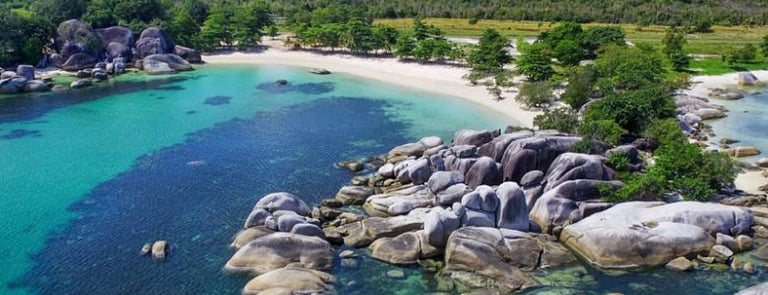

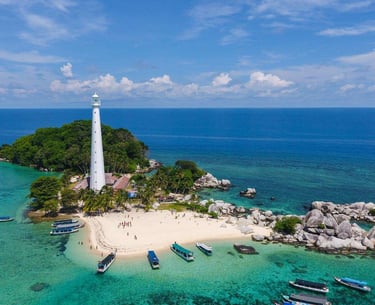

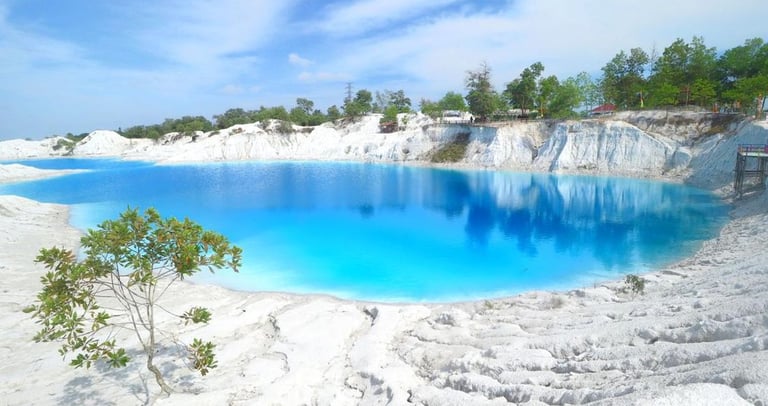

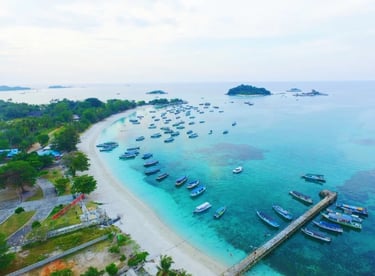

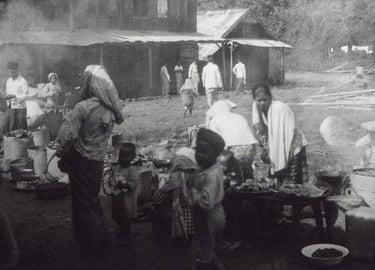

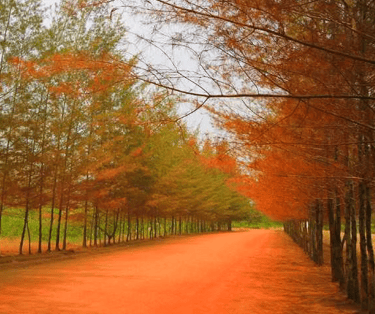

Follow us to explore Indonesia with expert travel guidance
©PT.Sinar Pesona Travelindo 2025. All rights reserved.
